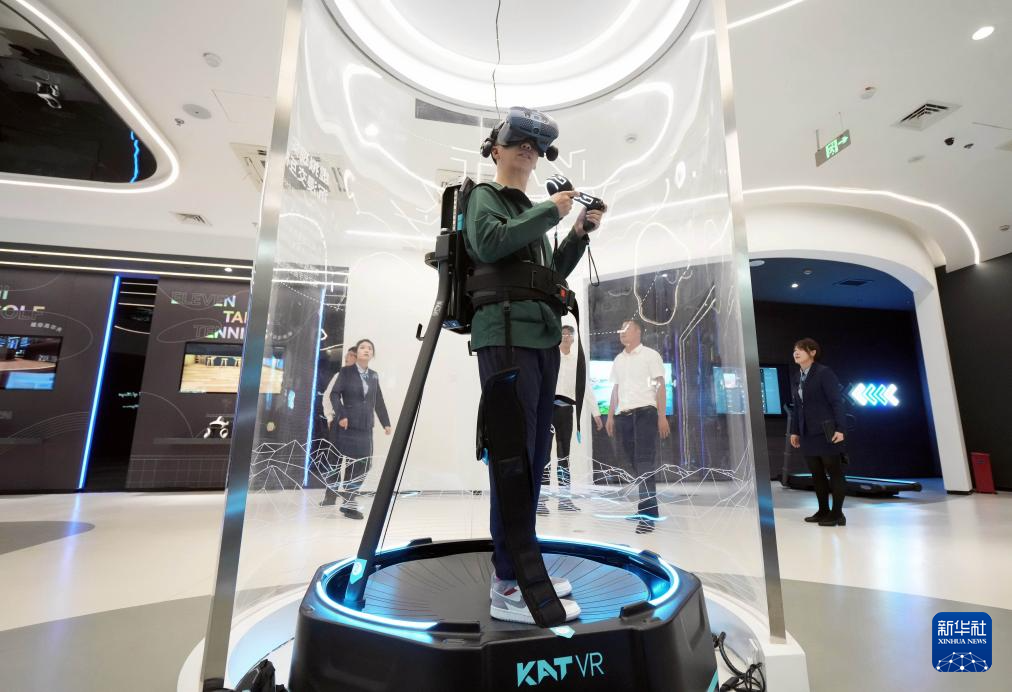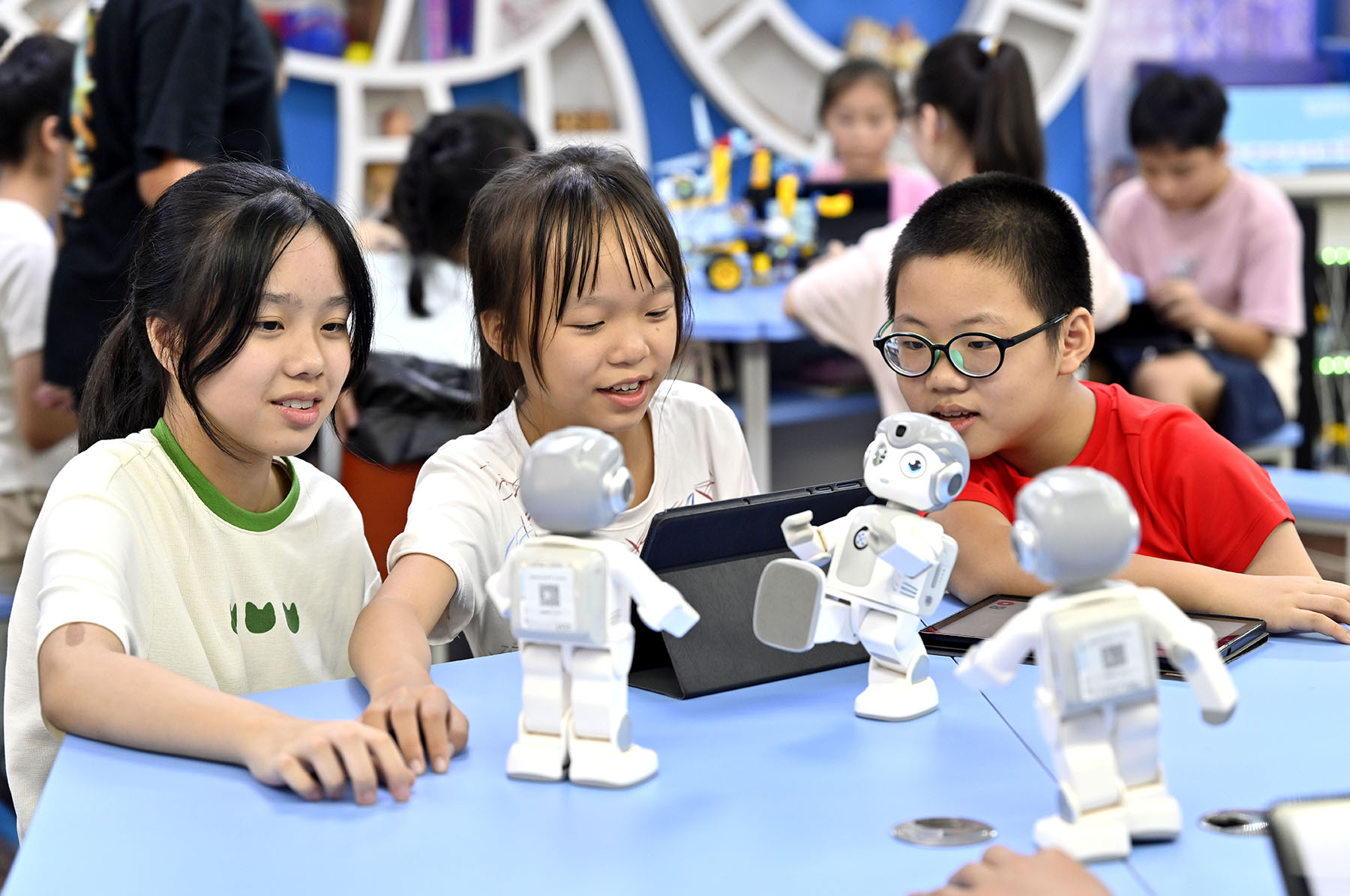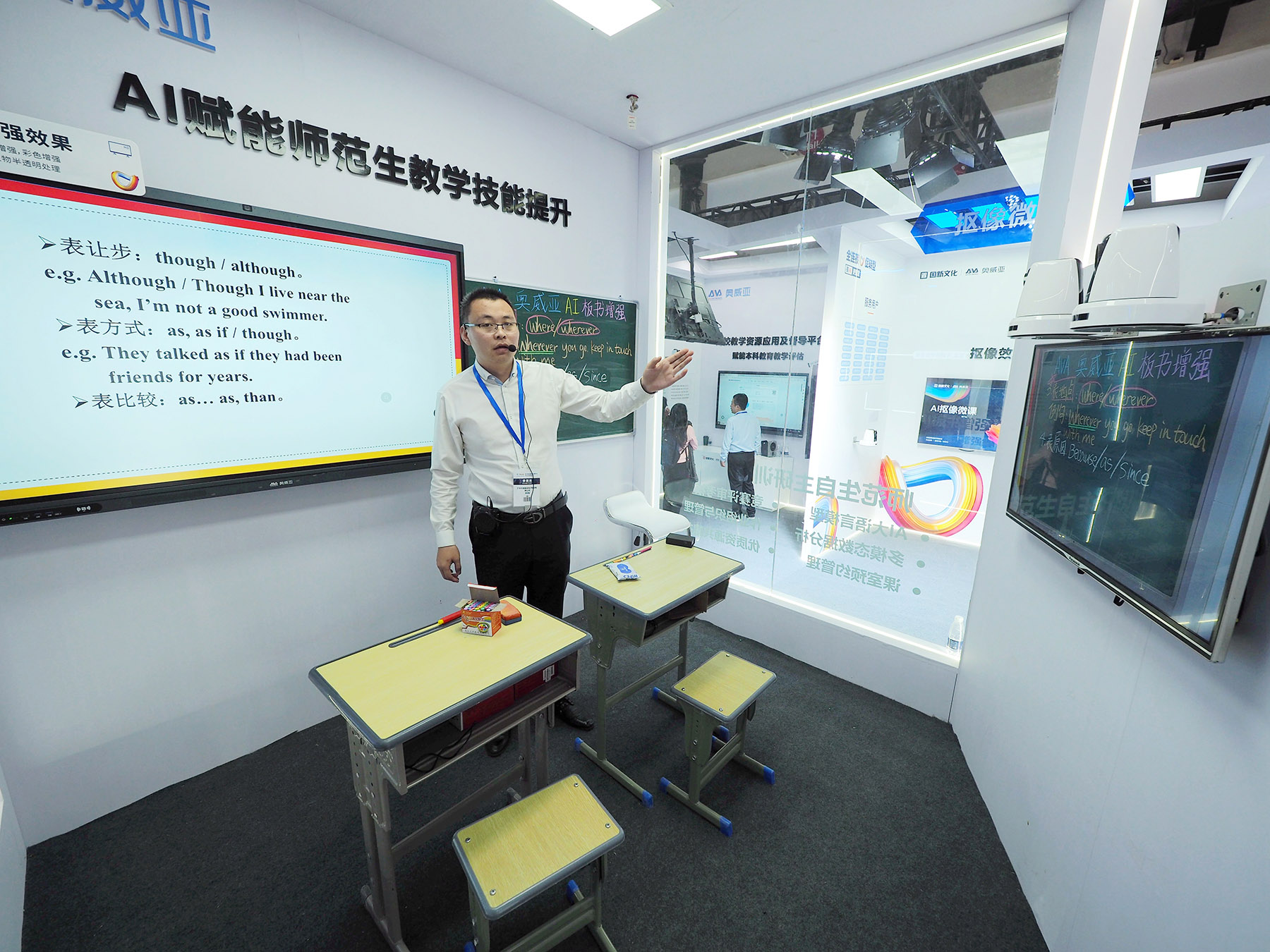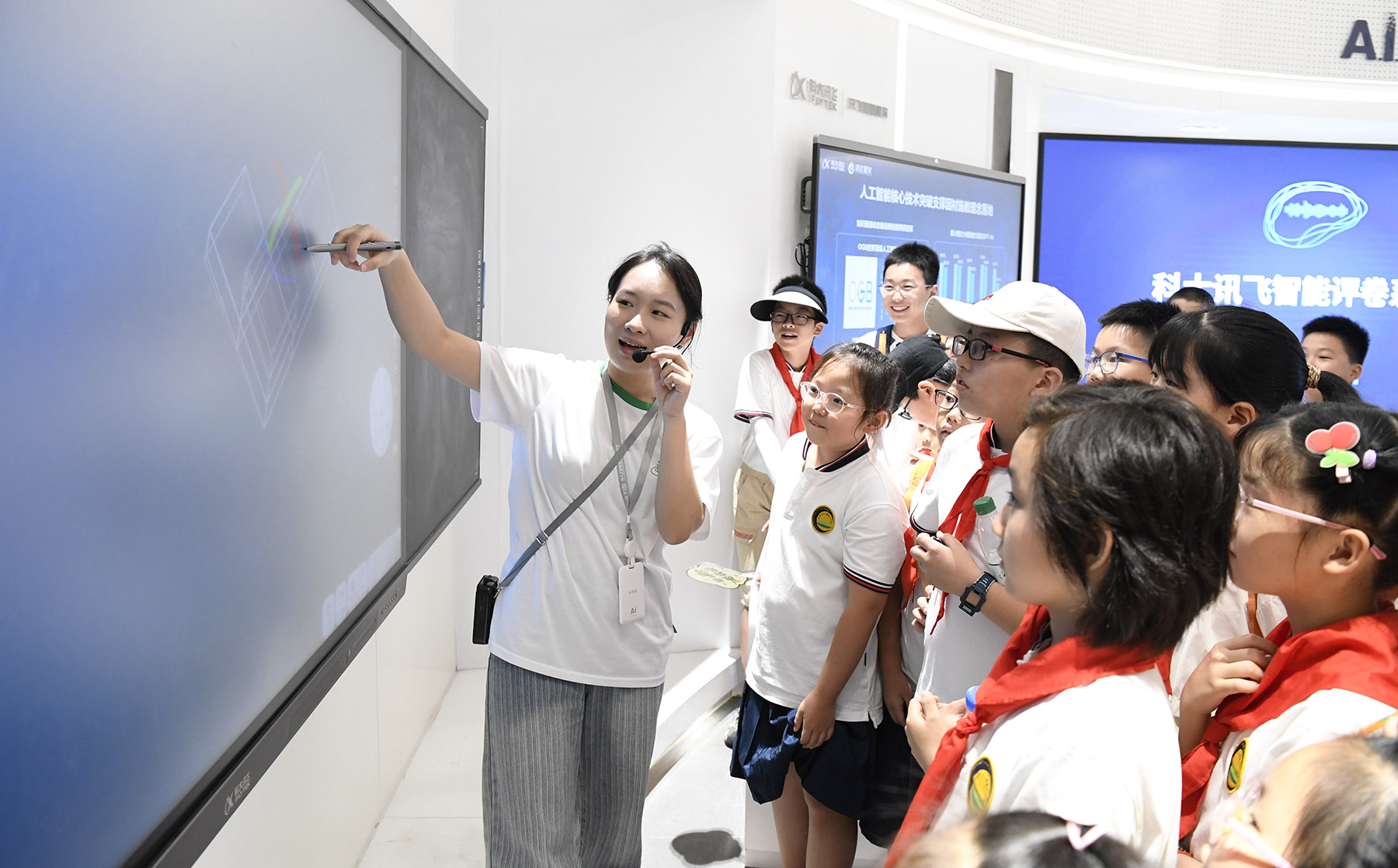New opportunities await workers, but some will find technology a threat to their job security

While the boom in artificial intelligence is ushering in new job opportunities, experts are cautioning that it will also bring short-term pain and change for some skilled workers and professionals.
At the end of last month, China released a guideline that aims to promote high-quality and sufficient employment. It requested that authorities at all levels “actively respond to the impact of the rapidly developing emerging technologies, such as artificial intelligence, on employment”.
Ni Ying, China head of the multinational human resources company The Adecco Group (TAG), said he was excited to learn about the guideline. “It is the first time that the central government has associated AI with the job market,” Ni said. “This will help companies of our kind to expand our vision, reminding us to explore new opportunities while addressing challenges brought by the rapidly evolving technologies.”
The Chinese job market has good prospects for candidates already armed with AI know-how.
According to the Chinese recruitment portal Zhaopin, employment vacancies for experts specializing in language processing related to large language models (LLMs) increased by 111 percent year-on-year in the first six months of this year.
The number of job openings for people with robot algorithm and deep-learning skills were up 76 percent and 61 percent respectively during the same period.
The leapfrog in development that AI technology has made over the past two years is undoubtedly the reason for the surging demand for such talent, experts from Zhaopin said.
The overall demand for AI talent has been on the rise in China. Market consultancy McKinsey & Company estimates that China will need 6 million professionals with proficient AI knowledge by 2030, which is six times the number in 2022. However, the talent gap may be as high as 4 million by that time.

But AI, like all the other technologies, is a double-edged sword. While some candidates are highly sought after thanks to their AI knowledge, others may find the emerging technology a threat to their job security.
Finance, audit, tax, translation, and banking positions will be the most affected by AI, said Guo Sheng, CEO of Zhaopin.
The adoption of LLM has already affected hiring in customer services and operations in China, which was down 2 percentage points in the first half of this year compared with the same period in 2022, said Hu Jiayin, assistant professor from the National School of Development at Peking University.
LLM’s impact on sales and business development was greater still, cutting job opportunities by 5 percentage points in the first half of the year.
Even professionals specializing in software and hardware development are not immune. Hiring for these skilled professionals was down by 1 percentage point in the first half of the year due to the spread of AI, said Hu.
The AI boom’s impact on the job market is different from other advances in technology, said Peta Latimer, president of international human resources service provider Mercer in Asia.
While blue-collar workers were the most vulnerable during the previous technology revolutions, white-collar workers and professionals will be affected the most by AI, the first time in history this has happened.
Ni from TAG predicts about 20 percent of the current head count in offices can be replaced by machines or other automated solutions. While it is quite easy to determine the jobs that are replaceable, it is still unclear what new employment opportunities can be created for these office personnel in the near term, he said.

But one thing is certain, more people will be working in the service industry when technology proliferates further, said Ni.
Japan may serve as a good reference. While it is one of the most automated countries in the world, the unemployment rate has remained low for years. The large and highly diverse service sector in Japan has provided plenty of job opportunities, Ni added.
Japan deployed about 397 robots per 10,000 employees in 2022, making it the fourth-largest automated country in the world, following South Korea, Singapore, and Germany, according to the International Federation of Robotics.
Japan’s unemployment rate was 2.6 percent in 2022, down 0.2 percentage points from a year earlier, according to its Ministry of Internal Affairs and Communications.
China has rapidly caught up in automation in recent years. It was fifth in the IFR rankings, using 392 robots per 10,000 employees in 2022. IFR experts defined China as having “high robot density”, especially given that the nation still has a large manufacturing industry workforce.
But, it should also be noted that China’s urban employment rate was 5.6 percent in 2022.
The large service sector in Japan may be one reason for the disparity. Tertiary industry’s contribution to Japan’s GDP was around 75 percent in 2022, while China’s was 53.3 percent the same year. Though the service industry’s contribution to China’s GDP rose to 54.6 percent last year, there is still room for growth, Ni said.
The September guideline to promote high-quality employment implied there are fresh employment opportunities in China, especially in the “silver economy”, he said.
New sectors in the healthcare industry should be explored, according to the guideline. Healthcare should be more deeply integrated with elderly care services, tourism, recreation, and food, to nurture new employment opportunities, it said.
“As China faces an increasingly aging society, there will be rising demand for services to be provided to the elderly group. New jobs such as bath assistants have already been churned out. We can foresee that demand for one-on-one care provided for the elderly will rise in China. This may lead to other job opportunities, like conducting background checks for these service providers or related training,” said Ni.

He cited food delivery and express courier services as other good examples of potential growth areas. A decade ago they were at a nascent stage in China, but today the size of these service providers is huge.
“There should be more education in the Chinese job market, telling people that service industries are not inferior to office work,” he said.
However, experts say it is still too early to predict the impact of emerging technologies on the employment landscape.
Business leaders around the world believe the biggest skills gap currently lies in creativity and innovation, according to a report released by TAG in April. However, the huge rise in AI technology does not mean that these skills will become obsolete.
About 57 percent of 2,000 C-suite executives polled by TAG think the “human touch” is more influential than AI in the workplace, and say human attributes are highly valued. Interestingly, human attributes are especially valued by leaders in the tech sector, according to the report.
Tim Wannenmacher, co-head of Global Markets for UBS Asia Pacific, identified finance as one of the sectors with the largest cost-saving opportunities through the adoption of AI. Half of all jobs in this sector are likely to be automated or augmented with AI, he said.
UBS started to use AI about 10 years ago, and it now has more than 100 live AI models to support decision-making and process automation.
However, Wannenmacher does not expect AI will widely replace financial professionals in the near term. Supporting human staff by enhancing productivity will be AI’s main function, which has received great attention over the past two years, he said.
Huang Yiping, dean of Peking University’s National School of Development, is skeptical about the extent AI can help improve productivity.
He said the current market craze for AI coincides with the logic behind the Solow computer paradox, also known as productivity paradox. American economist Robert Solow determined that productivity has not proportionally improved amid the proliferation of computers. As more investment is made in information technology, worker productivity may even go down instead of up, according to the paradox.
The World Bank has reached an even more surprising conclusion.

Despite rapid advances in technology, productivity growth across emerging markets has been declining over the past two decades, Anna Bjerde, the World Bank’s managing director of operations, said at the Bund Summit in Shanghai last month.
Since the global financial crisis of 2007-09, the decline in labor productivity growth has been broad-based, affecting 70 percent of economies and over 80 percent of the global extreme poor. This decline has reached all regions of the developing world, including East Asia, according to World Bank data.
“Everybody is talking about AI. But we have not really seen the hard evidence showing the increases in productivity, profit, or companies’ earnings,” Peking University’s Huang said.
It will take “a little bit longer” to see the results of advances in technology demonstrated in productivity numbers, he said. While some of the gains are not yet reflected in traditional economic measurements, technological innovation also creates structural issues and leads to some job losses, he added.
Ni said a similar process will take place in China, as the country undergoes industrial restructuring.
“We have noticed a recent dip in the Chinese job market. But it will only be temporary. Technology advancements require an upgrade in knowledge, skills, and even the mindset of the current labor force. This will cause some fluctuations in the job market,” he said, adding this has been the pattern of every industrial upgrade.
“Industries are upgrading as China calls for the development of new quality productive forces. Job candidates’ reskilling and upskilling are still underway, resulting in a mismatch of talent demand and supply. But, we can still see that China is on a trajectory in which technology will play a bigger role in economic growth,” he said.
Mark Wang, president and CEO of HSBC China, said in the past banks favored job candidates with trade and finance backgrounds. However, those with science and technology backgrounds are being increasingly sought by banks.
“We now like to hire candidates with backgrounds beyond the banking industry. Banks can train them, and they will later grasp the knowledge and skills of various industries. This will be the trend in the job market in the future,” said Wang.
Lifelong learning will be especially important at a time of rapid technological innovation, despite employees’ academic background, said Huo Yingli, Party secretary of the China Foreign Exchange Trade System.
“While business development and technology development used to be separate, these two are now merged … employees need to develop skills in both aspects if they aspire to personal growth or more opportunities on their career path,” she said.


